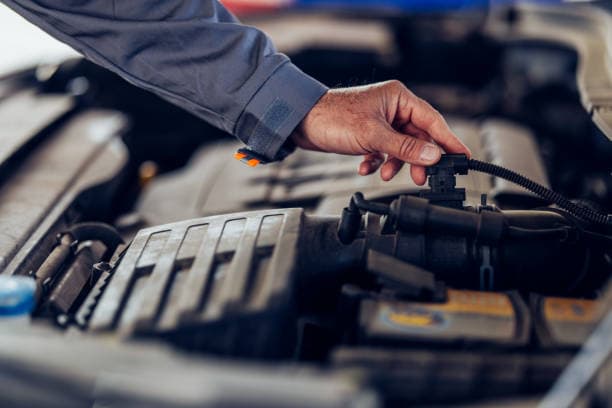How to Extend the Lifespan of Your Transmission
The transmission is a critical component of any vehicle, responsible for transferring power from the engine to the wheels to facilitate movement. Maintaining this intricate system ensures optimal performance, reliability, and longevity of your car. A well-cared-for transmission can last for many years, while neglecting its maintenance can lead to expensive repairs and reduced vehicle lifespan. This comprehensive guide explores essential practices to extend the life of your transmission, signs of potential issues, and the benefits of regular maintenance.
Understanding the Importance of Transmission Care
A transmission's primary function is to manage the engine's power output by adjusting gear ratios. Whether you drive a manual, automatic, continuously variable transmission (CVT), or dual-clutch transmission (DCT), regular maintenance is vital for smooth performance. Transmission problems can arise from heat, friction, and mechanical wear, making proactive care crucial.
Essential Tips to Extend Your Transmission's Lifespan
1. Regular Transmission Fluid Checks and Changes
Transmission fluid plays a crucial role in lubricating, cooling, and cleaning internal components. Over time, the fluid can become contaminated or depleted, reducing its effectiveness. Follow these guidelines:
- Check fluid levels monthly.
- Change the fluid according to the manufacturer's recommendations (typically every 30,000 to 60,000 miles).
- Use the correct type of transmission fluid specified in your vehicle's manual.
2. Install an Auxiliary Transmission Cooler
Heat is the number one enemy of transmission systems. If you frequently tow heavy loads or drive in high-temperature conditions, consider installing an auxiliary cooler. This device helps dissipate excess heat, reducing the risk of overheating and fluid breakdown.
3. Practice Smooth Driving Habits
Driving habits significantly impact transmission health. Adopt these practices:
- Avoid sudden acceleration and abrupt braking.
- Gradually shift gears in manual transmissions.
- Come to a complete stop before shifting from reverse to drive.
- Use the parking brake when parked on inclines to reduce stress on transmission components.
4. Schedule Regular Transmission Inspections
Professional inspections can identify minor issues before they escalate. Certified mechanics can:
- Check fluid levels and quality.
- Inspect seals and gaskets for leaks.
- Test transmission performance during operation.
5. Keep the Engine Cooling System in Good Condition
The cooling system regulates engine temperature and prevents the transmission from overheating. Ensure that the radiator, coolant levels, and cooling fans are functioning correctly.
6. Avoid Excessive Towing and Overloading
Towing heavy loads generates extra heat and stress on the transmission. Follow the manufacturer's towing guidelines and avoid exceeding the vehicle's towing capacity.
7. Address Issues Promptly
Ignoring early signs of transmission trouble can result in significant damage. Watch for:
- Delayed or rough gear shifts
- Unusual noises (e.g., grinding or whining)
- Leaking fluid
- Burning smells
- Dashboard warning lights
Common Transmission Problems and Their Prevention
Understanding common issues can help you take preventive measures:
- Fluid Leaks: Inspect for red or brown puddles under the vehicle. Leaks often stem from worn seals or gaskets.
- Overheating: Overheating occurs when fluid levels are low or the cooling system malfunctions. Regularly check fluid levels and maintain the cooling system.
- Slipping Gears: Gear slipping may indicate worn components or insufficient fluid. Schedule a diagnostic test if you experience slipping.
- Torque Converter Issues: A faulty torque converter can cause shuddering or unusual noises.
The Role of Transmission Fluid in Longevity
Transmission fluid serves multiple essential functions:
- Lubrication: Reduces friction between moving parts.
- Cooling: Dissipates heat generated during operation.
- Hydraulic Function: Enables smooth gear shifting.
- Cleaning: Removes debris and contaminants.
Use the correct type of fluid recommended by the vehicle manufacturer, as different transmissions require specific formulations.
The Benefits of Regular Transmission Maintenance
Maintaining your transmission offers several advantages:
- Enhanced Performance: Ensures smooth and responsive gear shifts.
- Increased Fuel Efficiency: Reduces engine strain and fuel consumption.
- Prolonged Vehicle Lifespan: Prevents premature transmission failure.
- Cost Savings: Early detection of issues can prevent costly repairs.
- Improved Safety: A well-functioning transmission ensures better vehicle control.
DIY Transmission Maintenance vs. Professional Service
While some maintenance tasks can be performed at home, others require professional expertise.
DIY Tasks:
- Checking fluid levels
- Inspecting for leaks
- Observing gear shift performance
Professional Tasks:
- Fluid changes and flushes
- Diagnosing mechanical issues
- Repairing or replacing worn components
Myths About Transmission Maintenance
Misinformation can lead to improper care. Here are common myths debunked:
- "Transmission fluid never needs changing."
- Fact: Fluid degrades over time and must be replaced.
- "All transmission fluids are the same."
- Fact: Each transmission type requires a specific fluid formulation.
- "Shifting to neutral at stops saves the transmission."
- Fact: Frequent shifting can cause unnecessary wear.
When to Consider Transmission Replacement
Despite best efforts, transmissions may eventually wear out. Replacement may be necessary if:
- Repairs become frequent and costly.
- The transmission fails to shift gears properly.
- Unusual noises persist despite maintenance.
Choosing the Right Transmission Service
Selecting a reliable repair service ensures quality work and peace of mind. Look for:
- Certified Technicians: ASE certification indicates professional expertise.
- Positive Customer Reviews: Online testimonials provide insights into service quality.
- Warranty Offerings: Reputable shops offer warranties on parts and labor.
- Transparent Pricing: Request detailed estimates before authorizing repairs.
Conclusion
Extending the lifespan of your transmission requires regular maintenance, attentive driving habits, and timely repairs. By understanding transmission functions, recognizing early warning signs, and following best practices, you can ensure a smoother, safer, and more efficient driving experience. Remember, proactive care is the key to avoiding costly repairs and maximizing your vehicle's performance. Stay diligent, consult professionals when needed, and enjoy a dependable transmission for years to come.
